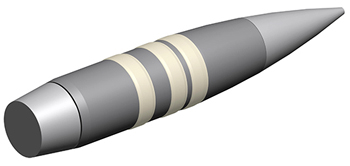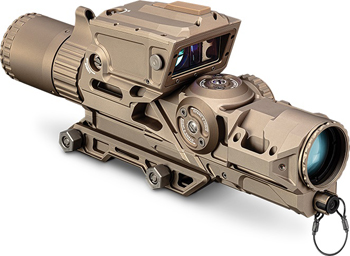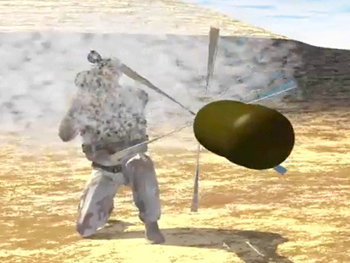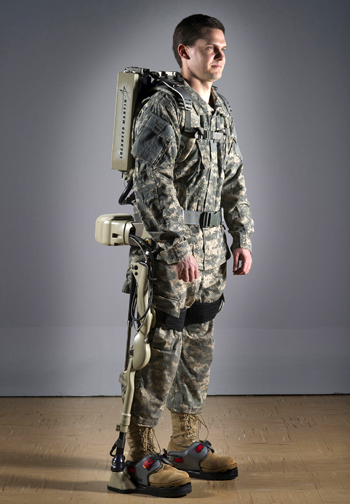INDIAN ARMED FORCES CHIEFS ON OUR RELENTLESS AND FOCUSED PUBLISHING EFFORTS

The insightful articles, inspiring narrations and analytical perspectives presented by the Editorial Team, establish an alluring connect with the reader. My compliments and best wishes to SP Guide Publications.

"Over the past 60 years, the growth of SP Guide Publications has mirrored the rising stature of Indian Navy. Its well-researched and informative magazines on Defence and Aerospace sector have served to shape an educated opinion of our military personnel, policy makers and the public alike. I wish SP's Publication team continued success, fair winds and following seas in all future endeavour!"

Since, its inception in 1964, SP Guide Publications has consistently demonstrated commitment to high-quality journalism in the aerospace and defence sectors, earning a well-deserved reputation as Asia's largest media house in this domain. I wish SP Guide Publications continued success in its pursuit of excellence.
- Operation Sindoor: Resolute yet Restrained
- India’s Operation Sindoor Sends a Clear Message to Terror and the World – ‘ZERO TOLERANCE’
- Japan and India set forth a defence cooperation consultancy framework, talks on tank and jet engines
- Terrorist Attack in Pahalgam in Kashmir: Unfolding a long surgical war against PAK
- Lt General Pratik Sharma takes over Command of Indian Army's Northern Command
Smarticle Robots - and more
Smarticle research has the potential to make robots capable of changing their shapes, modalities and functions
 |
The Author is Former Director General of Information Systems and A Special Forces Veteran, Indian Army |
The US Army is reportedly buying pocket sized modular robots in bulk for platoon and below for reconnaissance. But a media report published in September 2019 had revealed that the US Army, with funding from the National Science Foundation, had paid researchers at the America’s Georgia Institute of Technology in Atlanta and the Northwestern University in Evanston, Illinois to come up with a new form of “smarticle robots” that could be used to build larger robots for a variety of purposes in different situations.
Recently, Dan Goldman, Physics Professor at Georgia Institute of Technology, has said, “People have been interested in making a certain kind of swarm robots that are composed of other robots. These structures could be reconfigured on demand to meet specific needs by tweaking their geometry. As robots become smaller and smaller, we’ll have to use mechanics and physics principles to control them because they won’t have the level of computation and sensing we would need for conventional control. If you put a ring around the cloud of little robots, they start kicking each other around and the larger ring (supersmarticle) moves around randomly.”
In future, the foot soldier will be able to release a swarm of smarticles for various missions
Sam Stanton, Programme Manager, Complex Dynamics and Systems at the Army Research Office, part of the Army Combat Capabilities Development Command’s Army Research Laboratory says that Smarticle research has the potential to make robots capable of changing their shapes, modalities and functions. In a press statement Stanton said, “The endgame is to use these modular robots on the ground for real missions. For example, as envisioned by the Army Functional Concept for Manouevre, a robotic swarm may someday be capable of moving to a river and then autonomously forming a structure to span the gap.” But in future, the foot soldier will be able to release a swarm of smarticles for various missions.

Concurrently, America’s Defence Advanced Research Project Agency (DARPA) is working on the Extreme Accuracy Tasked Ordnance (EXACTO) project with military contractor Teledyne Technologies and ammunition maker Orbital ATK for developing ‘Self-Steering Bullets’. Packed with tiny sensors, a .50-caliber bullet under development can change course rapidly in midair, potentially giving even a mediocre shooter sniper-like accuracy, with the ability to hit moving targets with ease. A competing effort from the Department of Energy’s Sandia Labs uses a laser to indicate the target while small fins on the bullet (also .50-caliber) steer it in flight. Testing is underway for both these programs.
Packed with tiny sensors, a .50-caliber bullet under development can change course rapidly in midair, potentially giving even a mediocre shooter sniper-like accuracy

(NGSW-FC)
News reports of January 25, 2022, state that the US Army has awarded a contract of $2.7 billion to ‘Vortex Optics’ based in Wisconsin for a new futuristic scope for its next-generation infantry weapons. The new rifle scope allows soldiers to shoot effectively at even farther ranges by predicting the path of a bullet before the trigger is pulled. The Next-Generation Squad Weapons—Fire Control (NGSW-FC), as the scopes are called, will go on the new Next-Generation Squad Weapons—Rifle (NGSW-R) and Next-Generation Squad Weapons—Automatic Rifle (NGSW-AR), due to be selected during 2022.
For developing the new rifle scope, Vortex Optics took the company's military-grade Razor rifle scope, a low power variable optic, and paired it with a ballistic computer and laser rangefinder. NGSW-FC attaches to the M1913 Picatinny rail that runs alongside the upper receiver of most NATO and US Army rifles. It provides 1x to 8x magnification and what Vortex calls an "active reticle fire control system," giving the user an adjusted point of aim that takes bullet drop and wind into consideration, increasing the first-round hit probability.

The Magneto Hydrodynamic Explosive Munition (MAHEM) is a weapon being developed by America’s DARPA that would utilise molten metal to penetrate enemy armour. The molten metal would be propelled by electromagnetic fields from explosions. The munition would be delivered to a target as warhead packaged into a missile, projectile or another platform. Driven by a compressed magnetic flux generator (CMFG), it would penetrate the armour of an enemy vehicle then explode when it gets inside, destroying the vehicle from the inside out. Use of a magnetic flux generator to fire a projectile without the traditional use of chemical explosives creates a more efficient and precise launch system. The use of molten metal to penetrate enemy armoured vehicles increases lethality and effectiveness on the battlefield. DARPA predicts the weapon will have greater efficiency, control, and precision than conventional explosives formed penetrators.
The new rifle scope allows soldiers to shoot effectively at even farther ranges by predicting the path of a bullet before the trigger is pulled

The Human Universal Load Carrier (HULC) is a hydraulic-powered exoskeleton suit intended to support soldiers on the battlefield and allow them to transport heavy loads for extended periods of time without the usual exhaustion that comes with such task. Being developed by Lockheed Martin for dismounted soldiers the HULC enables soldiers to carry loads up to 91 kg with minimal strain on the body. The system is expected to reduce musculoskeletal injuries that occur in soldiers due to lifting of heavy combat loads. Suitable for use in any terrain, it ensures that the weight doesn’t shift to the soldier’s body, hampering his movement. In July 2010, Lockheed Martin signed a $1.1 million contract with the US Army Natick Soldier Centre for testing and evaluating the ruggedised HULC design.
The HULC is fully un-tethered and flexible enough to allow for squatting, crawling and upper-body lifting of the user. It weighs 24 kg without batteries. It combines two distinct ExoHiker™ and ExoClimber™ features to carry heavy loads during long missions as well as during rapid ascent of steep slopes and stairs. It allows the user to take up to 200 pounds without any restriction (Strength Augmentation) and it lowers the metabolic cost of its wearer (Endurance Augmentation). A micro-computer onboard assures exoskeletal motions as per the individual.
The design is adjustable to suit users with a height of 5'4" to 6'2". The user can move at a maximum speed of 11 kmph long duration and 16 km/h burst speed. The system has various mission-specific attachments and can carry integrated systems such as armour, heating or cooling systems, plus sensors. The system can be removed and packed-up in 30 seconds. The modular components of the system can be swapped when the soldier is in danger and needs greater mobility to escape from the enemy.The HULC shifts the weight from heavy loads to the ground through the battery-powered, titanium legs of the lower-body exoskeleton.
The Magneto Hydrodynamic Explosive Munition (MAHEM) is a weapon being developed by America’s DARPA that would utilise molten metal to penetrate enemy armour
For past few years there has been news about the Defence Research and Development Organisation (DRDO) progressing with different design approaches to build an augmentative exoskeleton for the Indian Army. Apparently, there are two schools of thought for the design of the exoskeletons; passive/unpowered augmentative exoskeleton, and powered augmentative exoskeleton. But instead of wasting time on such arguments, developing both these could have been done and tried out – perhaps much faster by the private industry.
Finally, the DRDO and the private industry including startups need to focus on competing and beating the developments worldwide, some of which are mentioned above, not just exoskeleton suits for the Army.





